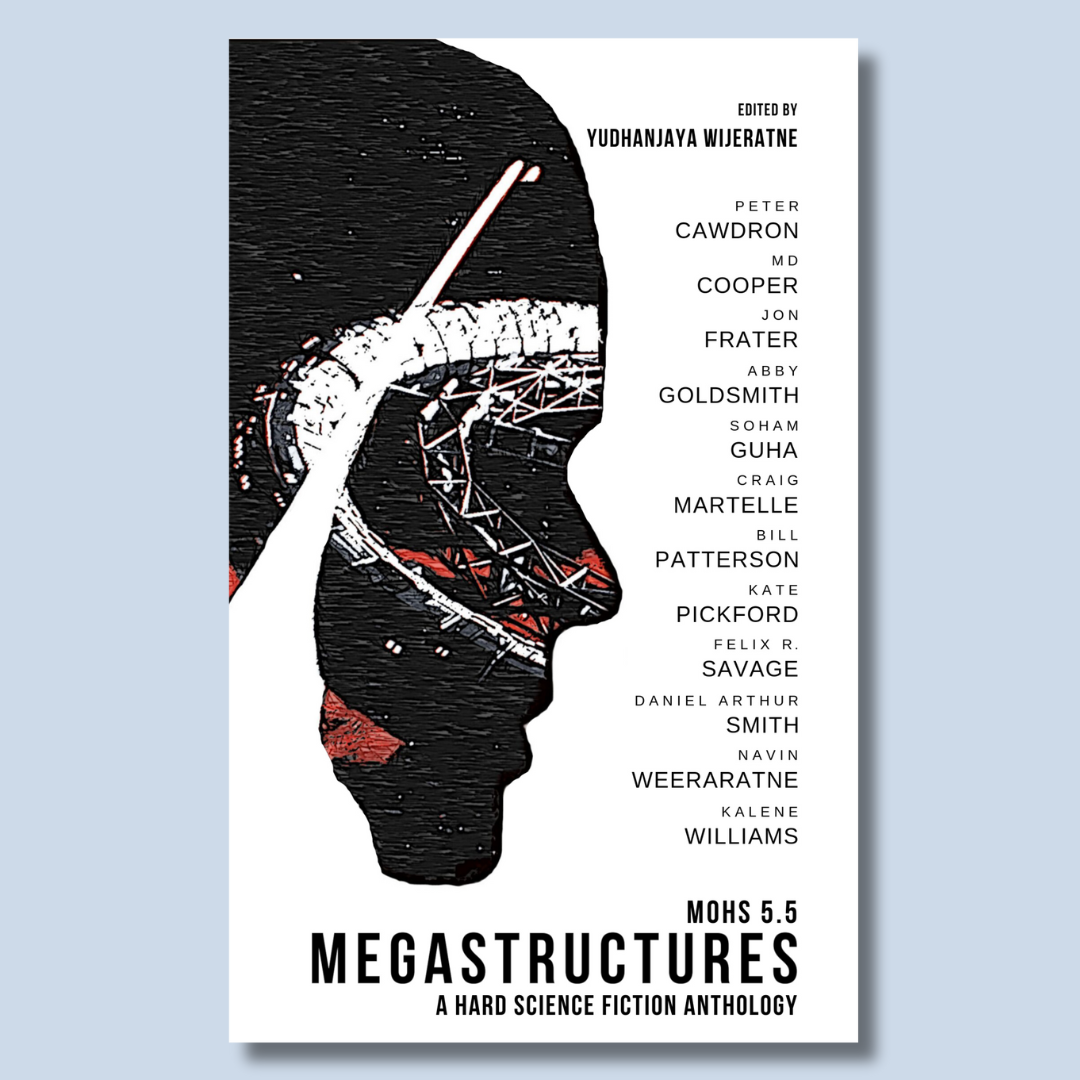
The Technology of the Commonwealth Empires
Notes on the directions that the world took in an alternate future
On the Megastructures anthology and its inspirations.
by Yudhanjaya Wijeratne
Colombo, Sri Lanka, 11/2019
I am from Sri Lanka, a little island just below India. In the world of scifi, Sri Lanka is the last resting place of Sir Arthur C. Clarke. His remains lie interred next those of Leslie Ekanayake, the brother of Clarke’s landlord.
To say that Sir Arthur was a legend in his own lifetime is an understatement. He settled down here in 1956, when Sri Lanka was still Ceylon. From here he delivered to the world a tremendous output of thought that cemented his status in history. He nodded towards his adopted homeland often; he placed his space elevator close by, and his favourite novel - The Songs of Distant Earth (1986) was about a planet named Thalassa, which in Sinhala breaks down very clearly into “Under the palm trees”. He was the Chancellor of the University of Moratuwa, Sri Lanka’s leading technological university, for 23 years. He wore a white sarong and shirt - the national dress - as part of the Sri Lankan delegation to the United Nations disarmament talks in the 1980. Sri Lanka bestowed upon him the titles of Vidya Jyothi (‘Luminary of Science); Sahithyaratna (‘Gem of Literature’); and the Lankabhimanya (‘Pride of Lanka’), the highest honor a civilian can achieve.
All of which is to say: in Sri Lanka, Sir Arthur was science fiction. He was an icon of intellect. We grew up in his shadow. The first science fiction book I read was Rendezvous with Rama. I grew up with a line in my head: there was Clarke, Niven, Lem, Asimov - and then there was everything else, like Star Wars, where the science fiction was just the background for the story.
As broadband became affordable in Sri Lanka, my reading expanded beyond the outdated libraries here. The lines in my head split into three bubbles, roughly. There was the hard scifi strain, which tried to be faithful to the tech and the physics we know. There was the stuff that didn’t really care, but used scifi as a prop. Then there were works that explored society, urban design, the impact of technology on humans - works like Neuromancer and Synners and Blindsight and Use of Weapons, which in my mind were just as rigorous as the works of Clarke et al, but with the attention directed at the people involved in the stories [2]. Despite my roots, I found myself drawn to them, in the same way that I eventually lost my obsession with Andromeda and replaced it with game theory.
The Megastructures anthology, then, is an attempt to pay homage to this journey. The sandbox is a nod to Rama, the first megastructure I read. Within these pages are stories that reflect the journey - from classical hard science fiction to stories (such as from Peter Cawdron, M.D. Cooper and Daniel Arthur Smith) to stories that blur the line (Abby Goldsmith, Craig Martelle) to stories that echo Foucault’s Panopticon (Kalene Williams). The “Mohs 5.5” moniker at the top indicates the average ‘hardness’ that we expected from the stories, based on the loose classification from TVtropes - roughly in the ‘speculative science’ category. The cover is a Janus, designed to evoke a classic feel. We also get to present Kate Pickford and Soham Guha - Kate is a veteran writer who, for the first time, is writing under her own name, and this is Soham’s first piece of fiction. Their stories reflect ongoing machine learning conversations and discuss the politics of being being in the closet as humanity grapples with megascale engineering.
Joining me in putting this together are two of the authors in this volume: Bill Patterson and Navin Weeratne. This anthology wouldn’t exist without Bill’s science checks, and Navin badgering me to do it (which reminds me: apologies, Navin, for being hard on your first draft, but katu kanna epaiy neh?)
Now, had I known the work involved in being an editor, I’d never have agreed to this. But we’re genuinely proud of the final assembly here: we have a number of superstars in this anthology; we have, almost accidentally, picked up writers from Sri Lanka, India, Australia, a Brit-in-hiding-in-Oregon, and the Captain Kirk of Alaska.
So, without further ado: enjoy.
